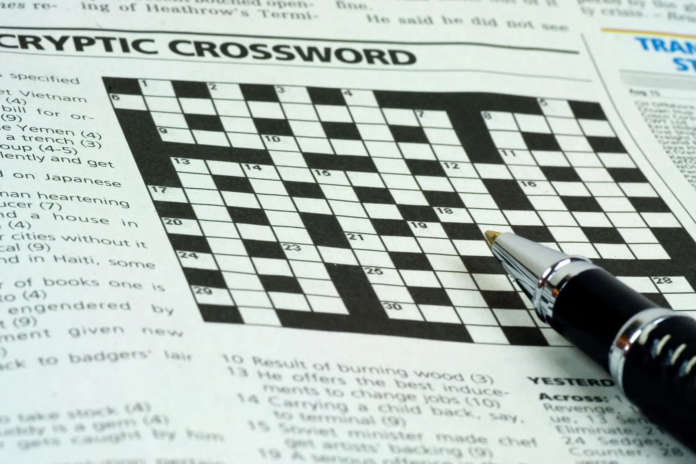The New York Times Crossword is one of those cultural institutions that manages to be both revered and reviled—sometimes simultaneously—by its solvers. It’s a daily ritual for many, a brain-teasing workout, and a source of endless frustration and delight. But every so often, a clue pops up that’s as provocative as it is puzzling. Enter the “Sassy Little Brat,” a crossword clue that, for many, has been both a head-scratcher and a smirk-inducer.
The Art of Crafting Crossword Clues
Before diving into the specifics of our bratty little friend, it’s essential to understand the art and science behind crossword clues. Creating a crossword is like composing a symphony—every word, every square must harmonize. A well-crafted clue doesn’t just lead solvers to the answer; it challenges them, misleads them, and ultimately makes them feel a little smarter (or humbler, depending on the day).
Crossword clues can be straightforward, like “Capital of France” (answer: PARIS), or they can be deceptive, punny, or laden with double meanings. The difficulty of a clue often correlates with the day of the week, with Monday being the easiest and Saturday the most challenging. But then there are those clues that, regardless of the day, catch you off guard. “Sassy Little Brat” is one of those.
The Many Faces of “Sassy Little Brat”
When “Sassy Little Brat” appeared as a clue in the NYT crossword, it immediately sparked a mixture of reactions. Solvers debated not just the answer but also the characterization. What does the phrase “Sassy Little Brat” evoke? For some, it’s an image of a child with a sharp tongue and a sense of entitlement, maybe a Veruca Salt from Willy Wonka & the Chocolate Factory. For others, it could conjure a mischievous teenager or even an adult with a defiant streak.
In the world of crosswords, however, the answer needs to fit the grid and often carries connotations that differ slightly from the surface meaning. “Sassy Little Brat” could lead to answers like “IMP” or “PIXIE,” words that convey both mischief and a certain level of charm. Other potential answers might include “MINX” or “SCAMP,” terms that historically describe someone who’s playful yet a bit cheeky.
The Cultural Significance
Why do certain crossword clues stick with us? It’s partly because they tap into broader cultural ideas or stereotypes. The “Sassy Little Brat” isn’t just a crossword answer—it’s a character trope that has been around for centuries. From Shakespearean plays to modern sitcoms, the bratty character has been used to entertain, frustrate, and often teach a lesson. But in a crossword, this trope is distilled into a few short letters, making it a shorthand for something we all recognize.
The persistence of the “Sassy Little Brat” trope in crosswords speaks to its versatility. It’s a character that can fit into various contexts—comic relief in a drama, the villain in a children’s story, or even the hero in a coming-of-age tale. In the crossword world, where space is limited, and every letter counts, the “Sassy Little Brat” is a perfect encapsulation of a well-known archetype in just a few squares.
The Intersection of Language and Society
Crosswords, particularly those in the New York Times, are more than just word puzzles; they reflect the times in which they’re created. The language used in them often mirrors societal trends, shifts in popular culture, and even changes in how we view certain ideas. The appearance of a clue like “Sassy Little Brat” might seem insignificant, but it subtly underscores how language around behavior, particularly in children, is perceived.
Historically, words like “brat” carried a heavier, often negative connotation. But in recent years, there’s been a shift toward viewing such behavior through a more nuanced lens. The word “sassy,” for example, has evolved from meaning something purely disrespectful to something more empowered, especially in the context of young girls. A “sassy” child today might be seen as spirited, outspoken, and confident—traits that are increasingly valued.
However, the pairing of “sassy” with “brat” complicates this, suggesting a mix of admiration and disapproval. It’s a delicate balance, one that the NYT crossword clue subtly plays with, inviting solvers to engage with these evolving ideas.
Solvers’ Reactions
The NYT crossword community is a vocal one, and clues like “Sassy Little Brat” inevitably stir up conversation. On forums, social media, and even in coffee shops, solvers discuss their interpretations, frustrations, and triumphs. Some find the clue endearing, a playful challenge that adds personality to the puzzle. Others might grumble about it, finding it a tad too subjective or ambiguous.
But that’s the beauty of crosswords—they’re as much about the conversation they spark as they are about the solutions. A clue like “Sassy Little Brat” might seem simple on the surface, but it opens the door to discussions about language, character archetypes, and even the nature of childhood behavior.
The Legacy of “Sassy Little Brat”
In the grand scheme of NYT crossword clues, “Sassy Little Brat” might not be the most famous or the most challenging, but it’s memorable. It’s the kind of clue that sticks with you, that you might bring up with a friend or puzzle over long after the grid is complete. It’s a reminder that language is fluid, that words carry weight, and that even in the confines of a crossword, there’s room for nuance and play.
As the NYT crossword continues to evolve, reflecting changes in society, culture, and language, clues like “Sassy Little Brat” serve as a touchstone—a small but significant piece of the larger puzzle that is our collective consciousness. Whether you love it or loathe it, one thing’s for sure: the “Sassy Little Brat” is here to stay, both in our crosswords and in our conversations.
